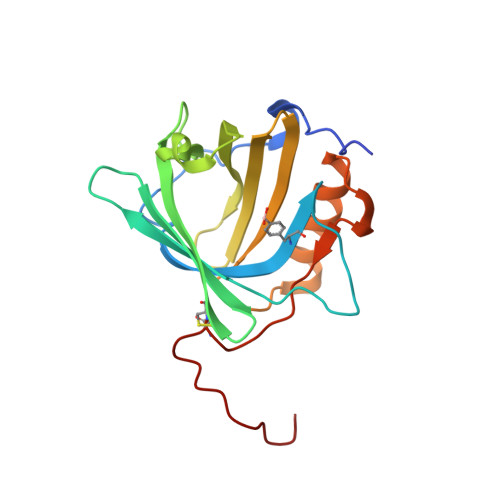A Tetrahedral Boronic Acid Diester Formed by an Unnatural Amino Acid in the Ligand Pocket of an Engineered Lipocalin.
Sommer, C.A., Eichinger, A., Skerra, A.(2020) Chembiochem 21: 469-472
- PubMed: 31390134
- DOI: https://doi.org/10.1002/cbic.201900405
- Primary Citation of Related Structures:
6QMU - PubMed Abstract:
Boronic acids have long been known to form cyclic diesters with cis-diol compounds, including many carbohydrates. This phenomenon was previously exploited to create an artificial lectin by incorporating p-borono-l-phenylalanine (Bpa) into the ligand pocket of an engineered lipocalin, resulting in a so-called Borocalin. Here we describe the X-ray analysis of its covalent complex with 4-nitrocatechol as a high-affinity model ligand. As expected, the crystal structure reveals the formation of a cyclic diester between the biosynthetic boronate side chain and the two ortho-hydroxy substituents of the benzene ring. Interestingly, the boron also has a hydroxide ion associated, despite an only moderately basic pH 8.5 in the crystallization buffer. The complex is stabilized by a polar contact to the side chain of Asn134 within the ligand pocket, thus validating the functional design of the Borocalin as an artificial sugar-binding protein. Our structural analysis demonstrates how a boronate can form a thermodynamically stable diester with a vicinal diol in a tetrahedral configuration in aqueous solution near physiological pH. Moreover, our data provide a basis for the further engineering of the Borocalin with the goal of specific recognition of biologically relevant glycans.
- Lehrstuhl für Biologische Chemie, Technische Universität München, Emil-Erlenmeyer-Forum 5, 85354, Freising, Germany.
Organizational Affiliation:


















